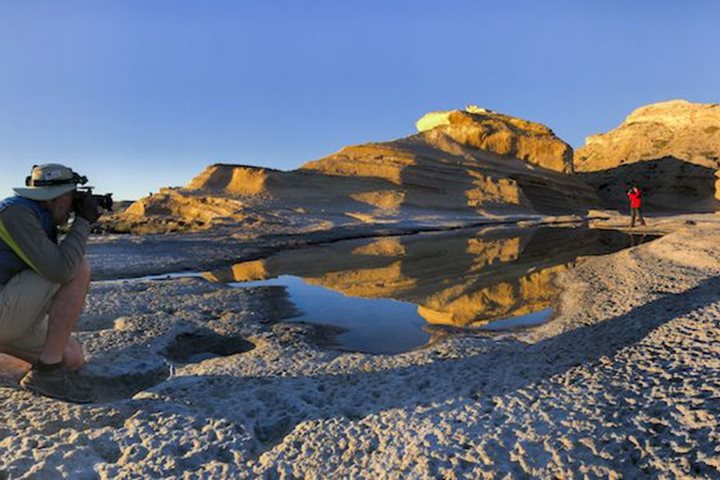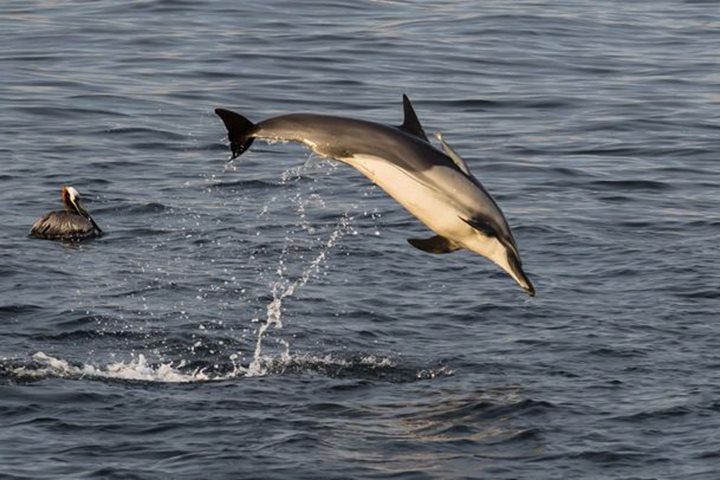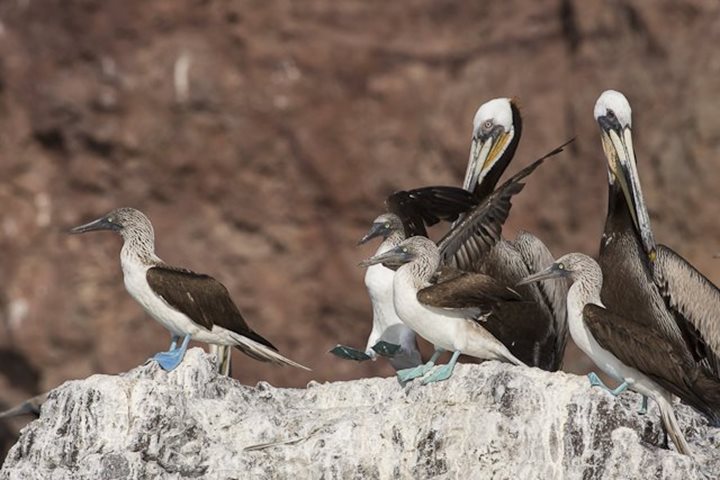The National Geographic Sea Bird guests spent a quiet night at the protected anchorage in Half Moon Cove. Our vessel cruised northward early this morning to the southwest side of Isla San Jose, where we planned to explore mangrove channels by kayak and expedition landing craft. We started slightly earlier than usual to take advantage of the tide, light, and temperature. We arose with the sun as the full moon was setting over the Sierra de la Giganta on the Baja California Peninsula. It was quite a beautiful sight, which set the stage for a brilliant day ahead. A lot would be packed into this day in the few hours before we would see the moon again.
Mangroves are small trees adapted for living in salt water. There are many unrelated species in different plant families, meaning that this ability has evolved independently numerous times. The common species in this area are red, white, and black, with red thickets dominating along the channel margin. Entering at high tide, we found intimate side channels to be peaceful and still, a literal mirror reflecting interesting patterns. Life abounds from the substrate through the mangrove canopy in this nurturing buffer between land and sea. Birds observed this morning included white ibis, reddish and snowy egrets, green heron, night herons, belted kingfisher, and various shorebirds. Some of us were delighted to espy a mangrove warbler. It was a perfectly timed outing, full of sunshine and discovery.
We continued north up the channel between the Baja California Peninsula and San Jose Island to an anchorage along the northwest end of the same large island. This afternoon we had the opportunity to walk up the arroyo that narrows to a few feet between massive conglomerate walls incised with dry meanders. It seemed surprisingly lush for a desert; dormant seeds and plants have responded to recent moisture. Desert lavender and malva rosa bushes were abuzz with bees and butterflies—queen, monarch, fritillary, and swallowtail, among others. A tarantula wandering across the arroyo entertained us for quite a while. We could hear the high-pitched whine of a Costa’s hummingbird display, but the highlight was to see an endemic Xantus’ hummingbird and her nest with two chicks. With all of this, there was plenty to challenge us photographically.
Returning to the beach, the crew, hotel, and galley staffs had set up for dinner ashore. We had the comfort of folding “lawn” chairs on which to consume a delicious fare of fishcakes, pork ribs, watermelon, and brownies. A bonfire was lit and the fixings for s’mores were supplied for all to enjoy.
Stories were told and songs were sung as the moon rose behind a desert backdrop.
The wind has died and the seas have calmed. We continue north toward tomorrow’s adventures after a full and rewarding day.










